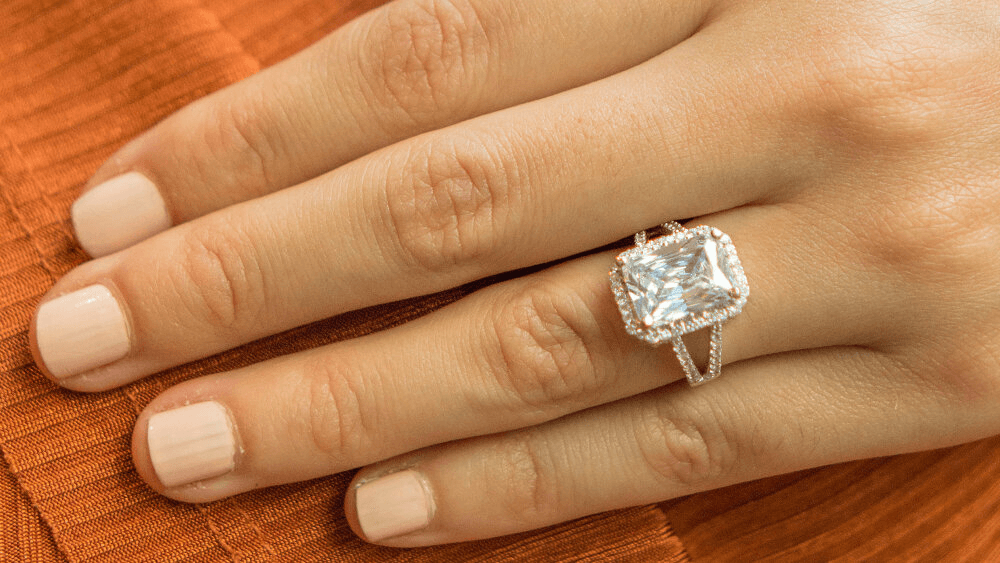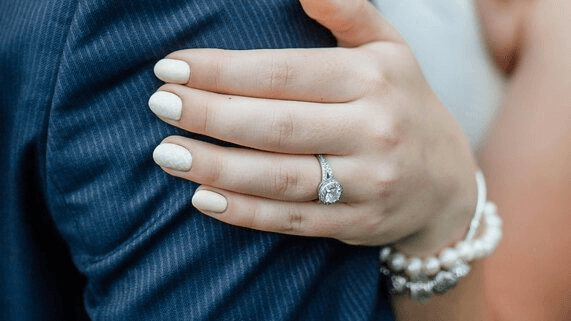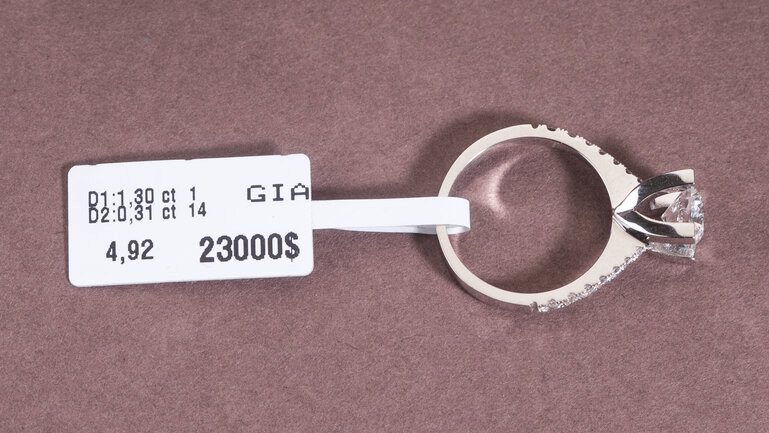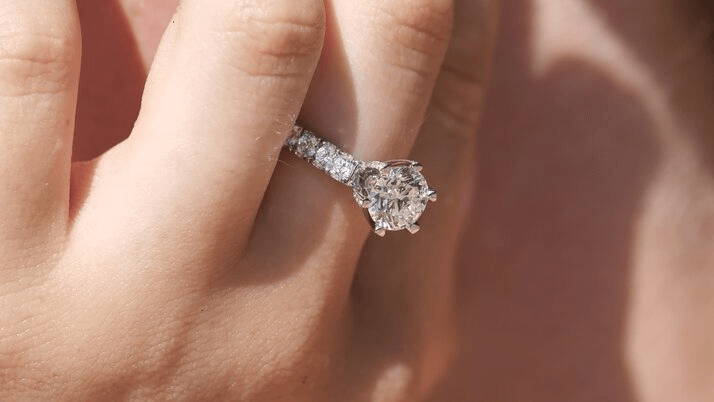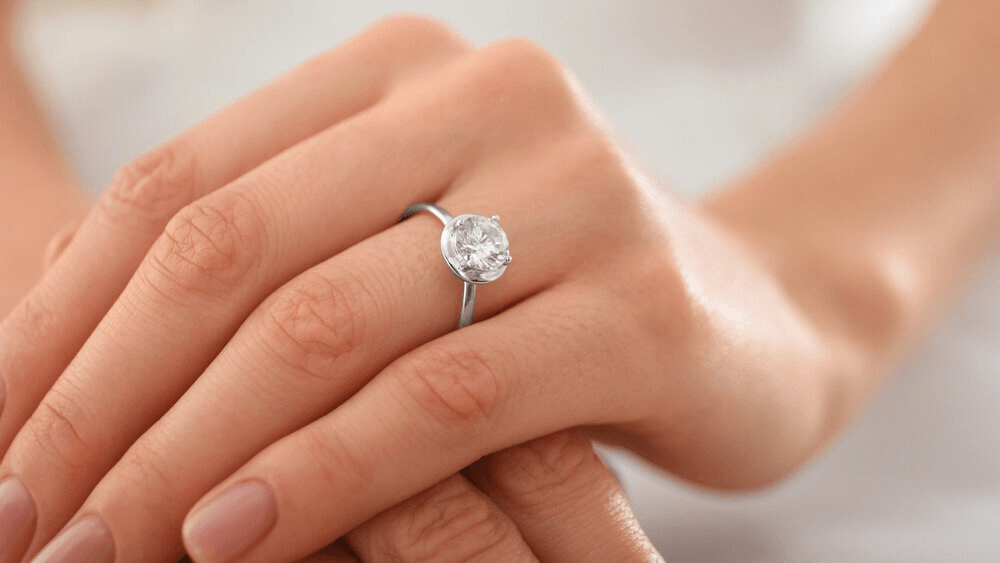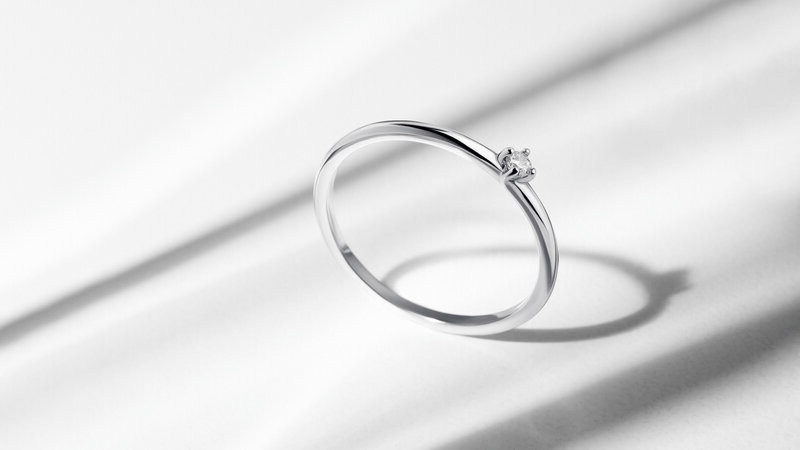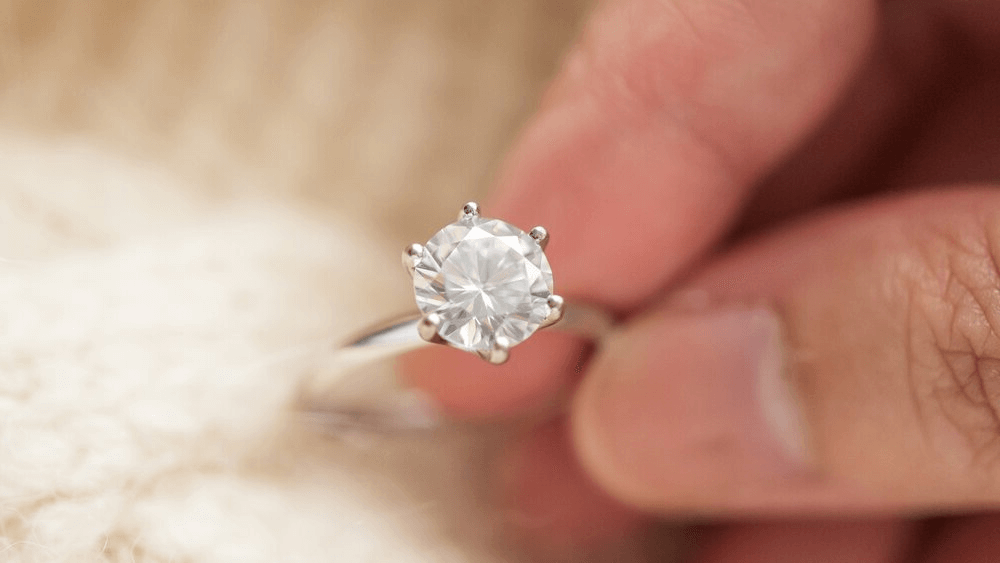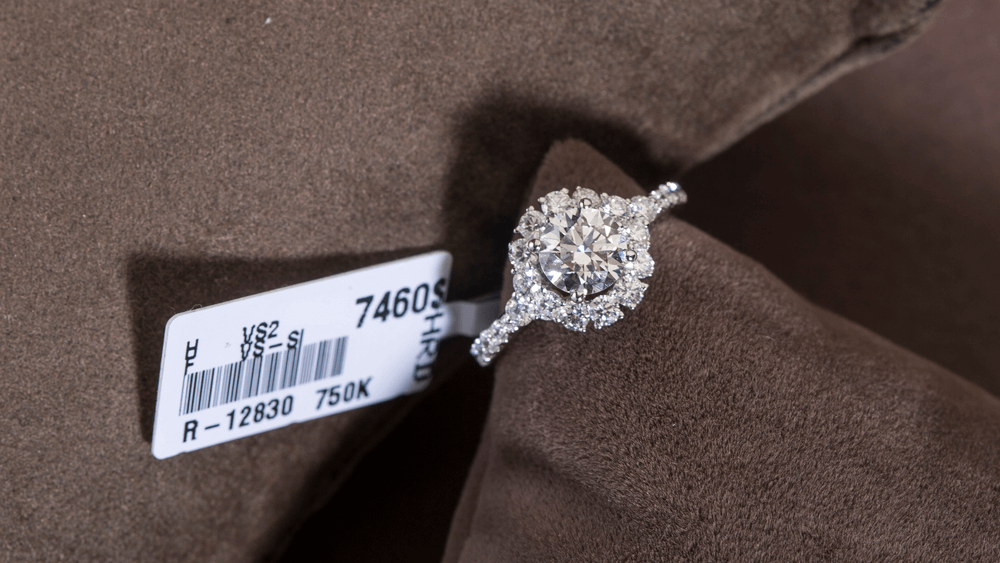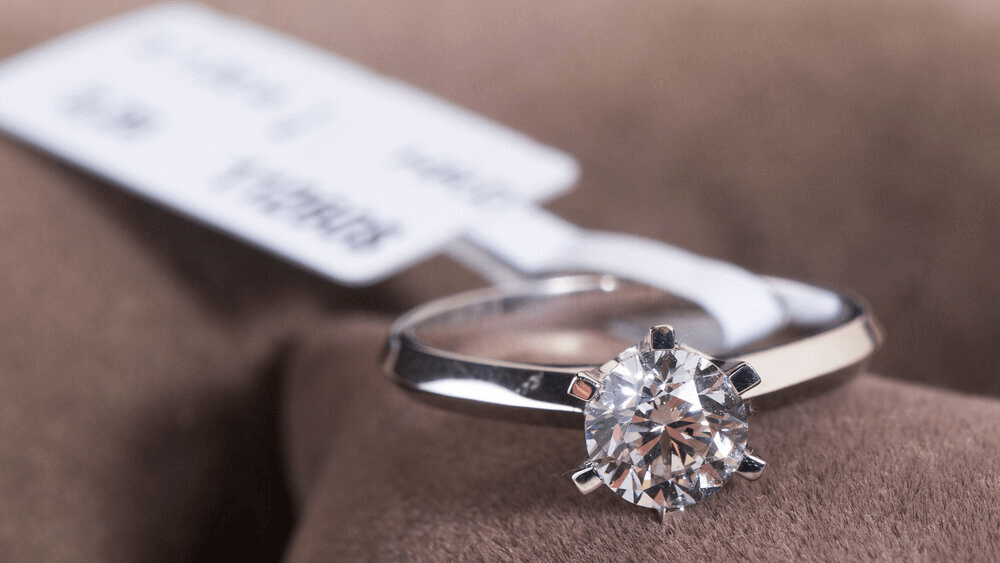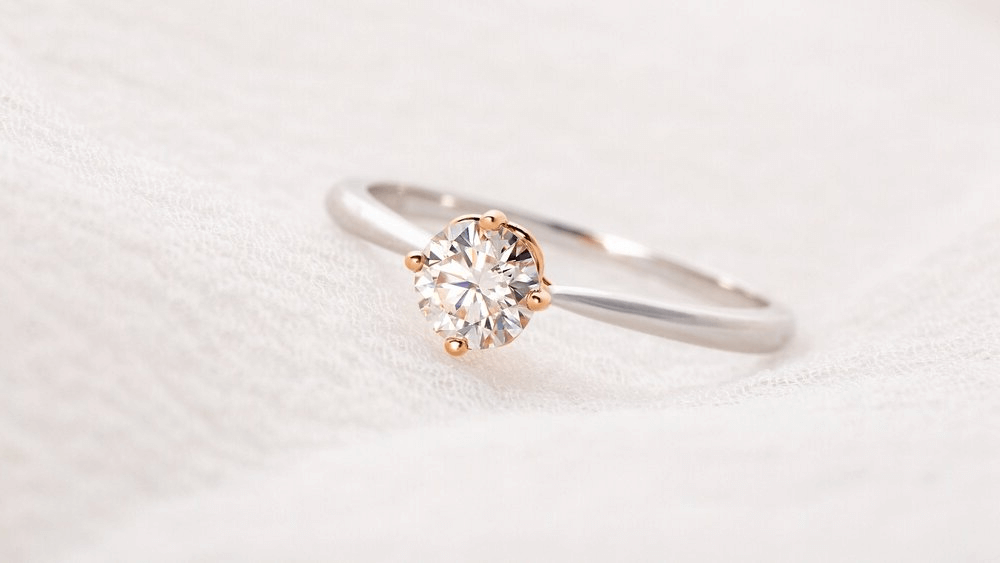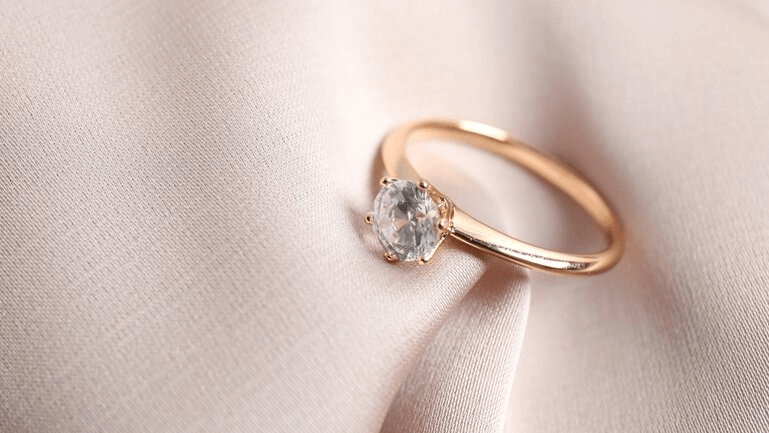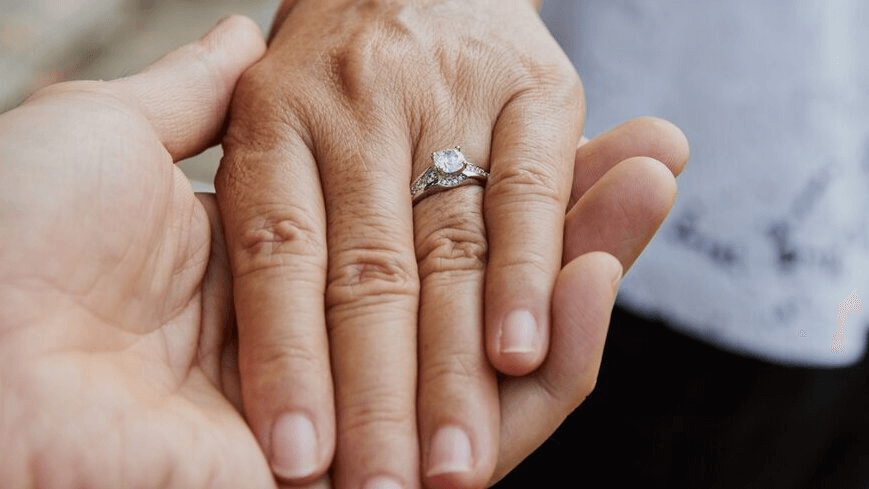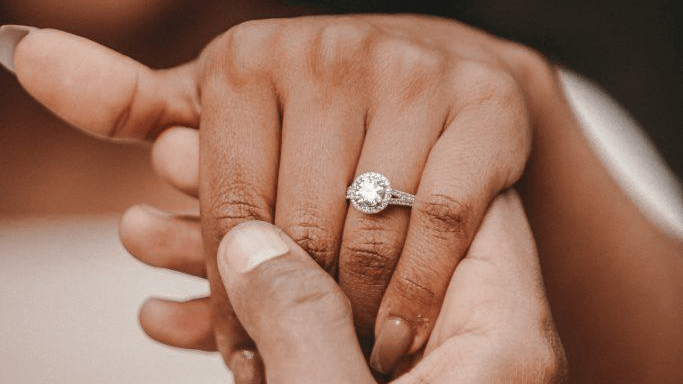Dazzling $6000 Diamond Rings You Can’t Resist

By Gary A.

Edited by Olivia H.
Published Mar 17, 2022
Edited on Mar 31, 2025
Finding the perfect $6000 engagement ring is all about balancing quality, style, and value, allowing you to create a beautiful symbol of your love without compromising on brilliance.
🎧 Listen to our expert insights:

- 6 Quick Tips for Buying a $6000 Engagement Ring
- Introduction
- Setting Realistic Expectations
- Selecting the Ideal Diamond
- The Misconception of Size
- Choosing the Right Jeweler
- Brand Considerations: Focusing on Quality Beyond the Name
- Our Expert Take
- 8 FAQs
- Recently Purchased $6,000 Engagement Rings for Inspiration
Before we dive deeper into the specifics, here are some practical tips to help guide your decision-making process:
6 Quick Tips for Buying a $6000 Engagement Ring
Maximizing Value and Brilliance Navigating the world of diamond engagement rings, especially within a $6000 budget, requires a blend of astuteness and awareness. Here are crucial tips to ensure you make the most informed and valuable choice for your significant investment.
- Tip 1:Understand the 4C’s – Cut, Color, Clarity, and Carat Cut: Opt for the highest cut quality within your budget. It significantly affects the diamond’s brilliance and fire. Color: Consider a diamond in the near-colorless range (G-H) for a balance of beauty and value. Clarity: Look for an eye-clean diamond where inclusions aren’t visible to the naked eye, typically in the SI (Slightly Included) range. Carat: Balance size with quality. A slightly smaller diamond with better cut, color, and clarity can be more appealing.
- Tip 2:Prioritize Diamond Cut Over Carat Size: The cut quality of a diamond impacts its overall sparkle and appearance more than carat weight. A well-cut diamond will appear more brilliant and larger to the eye.
- Tip 3:Opt for Smart Design Choices: Choose a ring setting that enhances the diamond’s appearance. Settings like halo or pavé can make the center stone appear larger and more lustrous.
- Tip 4:Balance the Diamond with the Setting: Allocate your budget wisely between the diamond and the ring setting. A beautiful setting can enhance a modestly sized diamond, making the entire ring look more luxurious.
- Tip 5:Be Strategic with Color and Clarity: You can opt for a lower color or clarity grade without compromising the ring’s beauty. A well-chosen SI clarity diamond in the G-H color range can look as pristine as higher grades to the unaided eye.
- Tip 6:Consider Diamond Shape and Symmetry: Explore various diamond shapes to find one that offers size and appeal within your budget. Shapes like oval, marquise, or pear can appear larger than round diamonds of the same carat weight. Ensure the diamond has good symmetry and proportions, which influence its overall balance and appeal.
Now that you’ve got these practical tips, use Jeweler AI below to find the perfect engagement ring that suits your style and budget:
Introduction
Engagement ring budgets come in all shapes and sizes, and figuring out where you stand on that long spectrum is, without a doubt, one of the most important things you will do. Before you even start learning about the specifics of investing in a diamond – before you even step foot within your chosen jewelry store – you’ve got to be clear and confident about what you’re willing to spend, and what you’re not.
Why? Because, like budgets, the engagement rings themselves come in all shapes and sizes. Those inclined can spend four, five, six, or seven figures on their ring, while the rest of us can easily find a beautiful piece at a much more realistic figure. You don’t want to step into the world of diamonds and engagement rings without first deciding where your budget places you.
Then again, if you’ve clicked through to this article, the hard part is probably over. $6,000 is an excellent starting point and a great figure if you’ve got some strong ambitions for your engagement ring.
Setting Realistic Expectations
$6000 is a great figure for finding an engagement ring. It’s right around the national average, which should give you a strong indication of what to expect at this figure.
The key to making the most of your budget, however, is to avoid getting too caught up on this fact alone. Sure, many, many shoppers find their dream ring at this price point, but that’s not to say that every ring available at this price point is going to be a dream-worthy option for you to consider.
In other words, even though your budget is a strong one, you can’t afford to get complacent or assume that you don’t need to think things through as carefully as a shopper on a slightly tighter budget – say, a budget of $5,000 – would need to.
Even before you take the ring into consideration, loose diamonds can cost hundreds of thousands of dollars – if not millions – all on their own. Like virtually any other shopper, you will still need to limit your expectations in some areas – while recognizing that your budget will open you up to plenty of beautiful and high quality options.
Diamond vs Setting: Balancing Costs
Aim to spend around $4,800 – $5,000 on the diamond alone. This represents around 80 – 83% of your total budget, which is a great ballpark to aim for whatever your budget.
Before you create a ring, you’ve got to find the diamond. Unless you’re going totally off-the-wall in terms of the ring’s design, it’s destined to be the primary focal point, and getting it right is absolutely essential.
Since the average budget sits at around $6000, it pays to know what the average buyer is actually buying and set some realistic expectations. In the US, the average diamond weight sits at around 1 carat, with the 1 carat Round Brilliant solitaire design representing the top choice among buyers.
The rules of buying the best diamond possible are the same at any carat weight so, provided you understand the basics of diamond value – and of maximizing value for money – the $5,000 mark is great for shoppers looking to hit upon the 1 carat range.

Selecting the Ideal Diamond
It takes time, research, and effort to ensure that the money you’re spending (and the emotional investment you’re making) into your engagement ring is going in the right direction. Fortunately, it’s not difficult to break the process down into a few key steps. Manage these, and you’ll find everything a lot more manageable.
Cut, Clarity, and Color: A Buyer’s Primer
Aspects like Cut, Clarity and Color all impact the visual quality of a diamond but, more importantly, they also play a pivotal role in determining its price. Two diamonds of the exact same weight and shape could be priced totally differently as a result of seemingly minor disparities in quality.
Cut is inarguably the most important to get right, but Clarity and Color are the top two categories for finding great value for money. The GIA Clarity scale, for instance, runs from FL and IF (flawless diamonds) through VVS1, VVS2, VS1, VS2, SI1, SI2 and, finally, the worst grades I1 and I2. The difference between the upper and lower grades is significant – thousands of dollars, in many cases – despite the fact that, in many cases, the visual difference between, say, a VVS1 and an SI2 diamond is only identifiable through strong magnification.
$5,000 could get you a small diamond with a high color and clarity grade, or it could get you a much, much bigger diamond that looks clean but is made affordable by ‘less desirable’ grades.
Eye Cleanliness: The Key to Smart Buying
This isn’t something you need years’ worth of training and experience in – anyone, even first-time shoppers, can identify whether or not a diamond’s visual quality (that is, what’s discernible without a loupe or strong magnification) is up to par.
Eye clean diamonds with low clarity grades offer the best value for money. There’s no use investing higher than you need to, and being wise about this aspect of quality will make it possible for you to get a much better diamond for your investment.
Eye clean diamonds can be found in lots of different clarity grades, so just get in touch with us if you have any questions.
The Misconception of Size
Most shoppers find it hard to shake off that nagging feeling that getting the biggest diamond possible – an unmissable, weigh-her-hand-down rock – is the name of the game, but it’s certainly not the key to finding a beautiful engagement ring.
Choosing Quality Over Carat Weight
This is particularly true when you consider the fact that some diamonds are cut to maximize carat weight, without much investment into ensuring eye cleanliness, good proportions, symmetry, or color. These diamonds are more attractively priced than diamonds that appear to be similarly sized, since their poor cut means they will lack sparkle and, potentially, reveal plenty of inclusions and blemishes.
You should aim to find a diamond that fits within the right proportions and meets expectations in terms of face-up appearance. If it surpasses those particular expectations, there may be a deal-breaking issue to blame. Don’t waste your money.
Choosing the Right Jeweler
If you’re simply looking for the cheapest possible diamond then, sure, bulk-buy vendors will often be the ones undercutting the reputable jewelry stores. It’s no secret that they’re a cheap alternative, but it’s also no secret that buying a diamond isn’t something you should actively cut costs on.
In other words, the ‘best value diamond’ is not the same as the cheapest diamond. Plenty of affordable diamonds aren’t worth the investment, and the secret to identifying whether or not that’s true for the diamond you’re considering lies in shopping where experts have invested their time and skill. At WillYou.com, we have experts who sort each diamond via our rigorous 11-step process. Couple this with their vast experience, it means we only sell what we want to put our name to.
At WillYou.com, we’re committed to ensuring shoppers are armed with the research they need to make the most out of their shopping experience, but there’s certainly something to be said for getting practical, and learning how to compare diamonds before you make that final decision.
Brand Considerations: Focusing on Quality Beyond the Name
A $1,000 – $1,200 budget for the ring setting is a great figure to work with, and getting your ambitions to fit within this range will ensure you have as much money as possible to spend on the diamond.
A budget of this size will open you up to more expensive options, such as the warmer, brighter 18K gold and a higher CTW for your ring (meaning more accent stones if the design calls for them.
Keep in mind that, however healthy your budget is, there are still plenty of ways to ‘misspend’, or channel money in a direction that may limit your options in other ways. Just because you can afford better clarity than someone on, say, a $4000 budget – or just because your budget can stretch to one of the designs available from a leading, high-end brand – doesn’t mean that doing so will get you the most bang for your buck.
It’s understandable shoppers feel compelled toward the ‘big names’ of jewelry design. The prestige and excitement that surrounds them means that, when you’ve got the means available to you, it’s easy to feel sold on a name, rather than an actual product.
Even the designers housed in many jewelry stores across the US, while not as coveted as the designer names, are able to charge a premium as a result of their own reputations.
Our Expert Take
A budget of $6,000 for your engagement ring puts you in a strong position. While a figure like this will, of course, necessitate plenty of planning and thought, it’s healthy enough to enable you to get a truly impressive diamond, and to come to the end of an experience with a beautiful ring at the end of the process.
Our best advice to shoppers on this budget would be to take it slow, do the research, and start making plans ahead of that initial consultation. The worst thing you can do is find out that $6,000 is about average for an engagement ring and commit to one of the first options you find without thinking things through.
Obviously, there’s a lot more to it than that, but striking that balance between confidence and caution is key – whatever your budget – and will ensure that you don’t run into any doubts over how the ring turned out on the day of the proposal.
Get to know the specifics of diamond quality – what aspects of quality a beautiful ring does need, and what it doesn’t – and the sort of ring you should expect to get on your budget. Keep in mind that the trick isn’t finding the biggest ring possible at $6,000, but one that truly reflects the investment you have made into it.
8 FAQs
- Q: Is $6000 a good budget for an engagement ring?
- A: Yes, $6000 is an excellent budget for an engagement ring. It allows for a good balance between diamond quality and size, and offers flexibility in choosing a beautiful setting.
- Q: Can I get a 1-carat diamond ring for $6000?
- A: Absolutely. With a $6000 budget, you can acquire a high-quality 1-carat diamond, especially if you opt for a near-colorless (G-H) and SI clarity grade.
- Q: Should I prioritize diamond cut or carat size in this budget?
- A: Prioritize diamond cut. A well-cut diamond will exhibit more brilliance and fire, making it appear more dazzling and sometimes larger to the eye.
- Q: Are halo settings a good choice for a $6000 budget?
- A: Yes, halo settings are a great choice. They enhance the perceived size and brilliance of the center diamond without significantly increasing the overall cost.
- Q: How can I maximize the appearance of my diamond within this budget?
- A: Consider a slightly lower color and clarity grade that still appears clean and white to the naked eye. Opt for a diamond shape that appears larger, like an oval or marquise.
- Q: Is it possible to get a custom-designed ring for $6000?
- A: Yes, custom designs are possible within a $6000 budget. Work closely with a jeweler to balance the costs of the diamond and the custom setting.
- Q: How should I split my budget between the diamond and the ring setting?
- A: A general guideline is to allocate around 80-85% of your budget to the diamond and the remaining 15-20% to the setting. However, this can vary based on personal preferences and design complexities.
- Q: Are online retailers a good option for buying a $6000 engagement ring?
- A: Online retailers can offer a wider selection and competitive pricing. It’s essential to research and ensure you’re dealing with a reputable and trustworthy online jeweler.
Ready to find your dream ring? Let Jeweler AI guide you in selecting the perfect $6000 engagement ring with expert precision. Start your journey today!
Here are more specific budget topics to browse:
- Get the Diamond Glow: Stunning Engagement Rings Under $1000
- Unlocking Luxury for Less: Navigating Engagement Rings Under $2000
- $3,000 Engagement Rings: Dazzling Elegance on a Budget!
- $4000 Diamond Ring: A Smart Buyer’s Guide to Exceptional Value
- The Smart Shoppers Guide to a $5000 Diamond Engagement Ring
- $7K Diamond Rings: Maximize Your Brilliance and Value!
- Avoid the Pitfalls: How to Smartly Spend $10000 on an Engagement Ring
- Expert Tips On How To Find The Ideal $12000 Engagement Ring
- Unlocking the Mystique: What Can a $15,000 Engagement Ring Truly Offer?
- Unlocking the Secrets: What Does a $20,000 Engagement Ring Truly Offer?
- $25,000 Engagement Ring Secrets: Discover the Luxury!
- $30,000 Engagement Ring: Is It Worth the Luxe Price?
- $50K Engagement Rings: See Why They’re Worth Every Penny!
Recently Purchased $6,000 Engagement Rings for Inspiration
As you explore the table of recently purchased engagement rings, it’s important to recognize the diverse options available within the $6,000 budget. The data reveals a balanced mix of both lab-grown and natural diamonds, showcasing the increasing popularity of lab-grown stones, which often come at slightly lower price points compared to their natural counterparts. For instance, the 3 Carat Lab Grown Emerald Diamond with Emerald Side Stones is priced at $6,019, making it an attractive choice for those seeking size and uniqueness. On the other hand, the Custom 1 Carat Natural Diamond Cushion Cut Halo Engagement Ring at $6,086 reflects the allure and timelessness of natural diamonds, a sentiment echoed across various styles in the table. Notably, the prices for engagement rings featuring unique settings, such as halo or split shank designs, tend to hover around the same price range, suggesting that buyers value aesthetics and craftsmanship alongside carat weight. This insight indicates that when selecting an engagement ring, considering both the type of diamond and the design can greatly enhance the overall appeal while remaining within budget.
| Ring | Type | Price |
| 3 Carat Lab Grown Emerald Diamond with Emerald Side Stones Engagement Ring | Lab Grown | $6,019 |
| Custom 1 Carat Natural Diamond Cushion Cut Halo Engagement Ring In White Gold | Natural | $6,086 |
| 1 Carat Natural Diamond Cathedral Style Engagement Ring | Natural | $6,097 |
| 3 Carat Lab Grown Radiant Diamond Petite Pave Engagement Ring | Lab Grown | $6,128 |
| Pink Spinel And 1 Carat Natural Diamond Engagement Ring | Natural | $6,149 |
| 2 Carat Lab Grown Round Diamond Halo Engagement Ring | Lab Grown | $6,159 |
| 5.50 Carat Lab Grown Round Diamond Solitaire Twist Engagement Ring | Lab Grown | $6,165 |
| 1.30 Carat Round Cross Split Shank Natural Diamond Engagement Ring | Natural | $6,173 |
| 1 Carat Lab Grown Round Diamond Tri-Color Braided Engagement Ring by Parade | Lab Grown | $6,182 |
| 6 Carat Lab Grown Oval Diamond Hidden Halo Engagement Ring | Lab Grown | $6,188 |
| Petite 1 Carat Pear Halo Natural Diamond Engagement Ring | Natural | $6,240 |
| 3 Carat Lab Grown Emerald Diamond Custom Gold Solitaire Engagement Ring | Lab Grown | $6,282 |
| 1.20 Carat Round Natural Diamond Split Shank Pave Natural Diamond Ring | Natural | $6,284 |
| Twisted Rope 1.20 Carat Cushion Solitaire Natural Diamond Engagement Ring | Natural | $6,313 |
| 2 Carat Lab Grown Round Diamond Petite Halo Engagement Ring | Lab Grown | $6,314 |
| Exquisite Custom 7 Stone Natural Diamond Trellis Engagement Ring | Natural | $6,331 |
| 6 Carat Lab Grown Oval Diamond Hidden Halo Engagement Ring | Lab Grown | $6,356 |
| Custom 5 Carat Lab Grown Marquise Diamond Engagement Ring With Pear Side Stones | Lab Grown | $6,372 |
| Custom 5.75 Carat Lab Grown Pear Diamond Cathedral Engagement Ring | Lab Grown | $6,399 |
| 1 Carat J Color Natural Diamond with Petite Pave Natural Diamond Ring | Natural | $6,403 |
| Football Shaped Marquise Natural Diamond Ring (1 Carat Bridge Design) | Natural | $6,458 |
| 1 Carat Oval Natural Diamond Bypass Engagement Ring In White Gold | Natural | $6,467 |
| 1.5 cttw Ring – 14K White Gold Solitaire Setting – natural diamond – 1.50 carat K, SI2 Excellent, Princess Diamond | Natural | $6,470 |
| 1 Carat Natural Diamond Double Halo Engagement Ring | Natural | $6,587 |
| Twisted Split Shank Engagement Ring (1.10 Ct. Princess Cut Natural Diamond) | Natural | $6,595 |
| 1.50 Carat Emerald Natural Diamond Petite Pave Engagement Ring | Natural | $6,600 |
| 1.30 Carat Lab Grown Round Diamond Antique Bloom Halo Engagement Ring | Lab Grown | $6,601 |
| Scallop 1 Carat Flawless Emerald Natural Diamond Engagement Ring | Natural | $6,636 |
| Contemporary Princess Cut Engagement Ring (1.22 Carat Natural Diamond) | Natural | $6,675 |
| Petite Halo Oval Shaped Engagement Ring (1.03 Carat Natural Diamond) | Natural | $6,694 |
| Custom Cathedral Natural Diamond Ring in 14K White Gold | Natural | $6,700 |
| 1.19 Carat Round Classic Solitaire Natural Diamond Engagement Ring | Natural | $6,704 |
| 2.50 Carat Lab Grown Radiant Diamond Petite Pave Engagement Ring With Diamond Prongs | Lab Grown | $6,706 |
| 1.50 Carat Lab Grown Round Diamond Twisted Petal Engagement Ring | Lab Grown | $6,710 |
| Designer Twisted Spilt Shank 0.80 Carat Natural Diamond Ring | Natural | $6,740 |
| Custom Sunrise Halo 1 Carat Round Natural Diamond Engagement Ring | Natural | $6,742 |
| Antique 1 Carat Custom Marquise Natural Diamond Engagement Ring | Natural | $6,746 |
| Flat Band Engagement Ring WIth 1 Carat Round Natural Diamond | Natural | $6,760 |
| Stunning 1.03 Carat Pear Natural Diamond Pave Engagement Ring | Natural | $6,789 |
| 2 Carat Lab Grown Radiant Diamond Yellow Gold Solitaire Engagement Ring | Lab Grown | $6,798 |
| 7 Stone Natural Diamond Engagement Ring In A Bespoke Design | Natural | $6,804 |
| 1 Carat Gold Oval Marquise Natural Diamond Engagement Ring | Natural | $6,844 |
| Classic Natural Diamond Solitaire Engagement Ring (0.96 Ct. Round Cut) | Natural | $6,848 |
| 1.29 Carat Marquise Natural Diamond Round Five-Stone Engagement Ring | Natural | $6,897 |
| Three Stone Ribbon 1.20 Carat Round Natural Diamond Engagement Ring | Natural | $6,901 |
| 1 Carat Emerald Reverse Trellis Natural Diamond Engagement Ring | Natural | $6,951 |
| Halo Cushion Cut Split Shank Engagement Ring (1.71 Carat Natural Diamond) | Natural | $6,966 |
| 2.50 Carat Lab Grown Round Diamond Channel Set Cathedral Engagement Ring | Lab Grown | $6,990 |
| 1 Carat Custom Swirl Cushion Natural Diamond Engagement Ring | Natural | $6,995 |
FOLLOW-UP GUIDE SERIES

